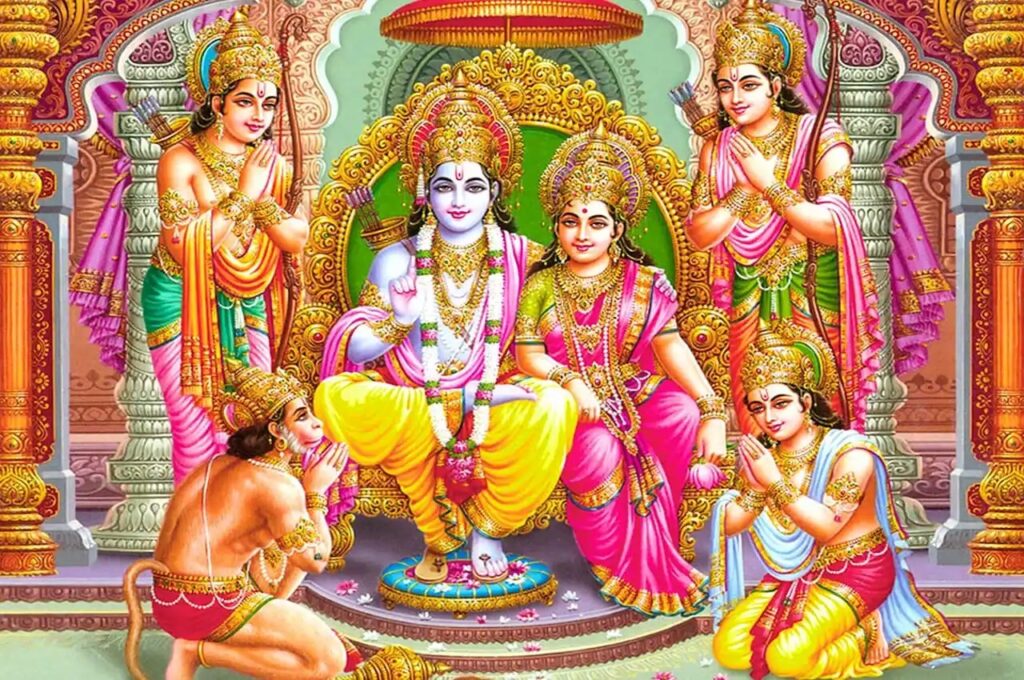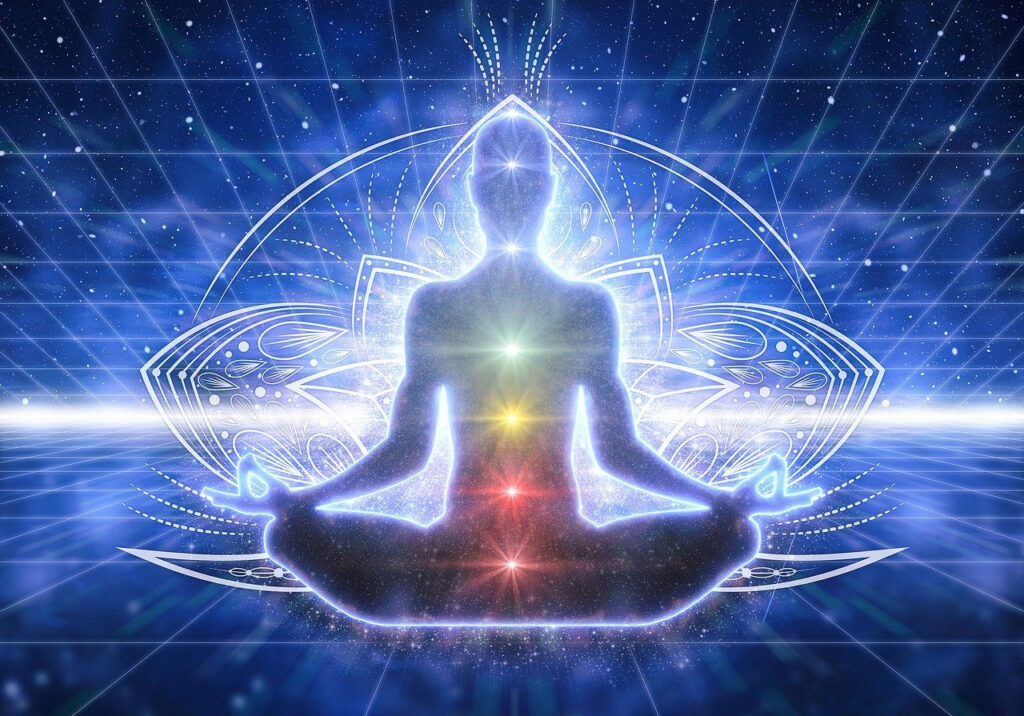The Vedas are a vast and ancient body of religious texts that hold a central place in the spiritual, cultural, and intellectual heritage of India. They form the foundation of Hinduism and are considered some of the oldest scriptures in human history. The term “Veda” comes from the Sanskrit word vid, meaning “knowledge” or “wisdom,” and the Vedas are seen as the ultimate source of divine knowledge, revealing truths about the cosmos, life, rituals, and the self.
Origin and Composition of the Vedas:
The Vedas are believed to have been composed over a period spanning from around 1500 BCE to 500 BCE, though their roots may go back even further in oral tradition. Initially, they were passed down orally for generations, preserved through precise memorization and recitation before being written down in Sanskrit. This oral tradition is considered a sacred duty, with recitation being a form of reverence and devotion.
The Vedas are attributed to the Rishis (sages) who, through deep meditation and spiritual insight, “heard” or “received” these hymns and mantras as divine revelations. They were not composed by any one individual but are regarded as eternal truths, beyond time and human authorship.
The Vedas are divided into four main collections:
- Rigveda:
- The Rigveda is the oldest and most revered of the Vedas, consisting of over 1,000 hymns and praises (called suktas) dedicated to various deities. These hymns are devoted to natural forces like the sun (Surya), fire (Agni), and thunder (Indra). It is primarily focused on ritualistic worship and cosmic order (Rta), reflecting the understanding of the universe, its cycles, and divine order. The Rigveda’s hymns also reflect profound philosophical and metaphysical insights into creation, the nature of the divine, and the human soul.
- Yajurveda:
- The Yajurveda deals primarily with the rituals and sacrifices (yajnas) that were central to Vedic religion. It consists of verses and mantras that guide the proper conduct of sacrifices, invoking gods to ensure prosperity, fertility, and cosmic harmony. The Yajurveda is divided into two parts: the Shukla (white) Yajurveda and the Krishna (black) Yajurveda. The text combines both prose and verse formats and offers detailed instructions for performing religious rituals, which were central to Vedic worship.
- Samaveda:
- The Samaveda is sometimes called the “Veda of Chants” because it focuses on musical composition and melodies for the hymns found in the Rigveda. The Samaveda contains not just the hymns, but specific instructions on how to chant them, with a strong emphasis on the sound and rhythm of the chants. It is closely connected to the ritual offerings and is considered to have a powerful spiritual effect when recited correctly. Many of the hymns in the Samaveda are derived from the Rigveda, but they are arranged in a manner that is meant to be sung rather than recited.
- Atharvaveda:
- The Atharvaveda is the most eclectic and diverse of the Vedas, containing hymns, spells, charms, and incantations that are used for a variety of practical purposes, such as healing, protection, and prosperity. It also contains philosophical reflections on life, ethics, and the nature of the world. The Atharvaveda includes prayers for health, longevity, and overcoming obstacles, reflecting concerns of ordinary life, unlike the other Vedas, which are more focused on rituals. It contains hymns and spells that were believed to counteract disease, evil spirits, and misfortune.
Structure of the Vedas:
Each Veda is divided into four primary sections, each serving a different function in the spiritual and ritual life of the Vedic society:
- Samhitas:
- The Samhita is the core section of each Veda and consists of collections of hymns (mantras) and prayers that were meant to be recited during various rituals. These hymns were often addressed to deities such as Agni (fire), Indra (warrior god), Varuna (cosmic order), and others, invoking their blessings and favor for prosperity, rain, health, and victory.
- Brahmanas:
- The Brahmanas are prose texts that provide detailed instructions on rituals and sacrifices. They serve as guides for the priests performing the ceremonies, explaining the symbolic meaning behind the rituals and the proper conduct for offering sacrifices. They also elaborate on the significance of various rituals, such as fire rituals, sacrifices to gods, and the cosmic order behind them.
- Aranyakas:
- The Aranyakas are often considered transitional texts, blending the ritual instructions of the Brahmanas with the philosophical and mystical insights that lead to the Upanishads. They were often composed in the forest (aranya) by hermits and ascetics who retreated from society to meditate and reflect on deeper spiritual truths. The Aranyakas provide insights into meditative practices and emphasize the pursuit of knowledge and inner realization.
- Upanishads:
- The Upanishads are the most philosophical and mystical portion of the Vedas. They explore the nature of reality, the self (Atman), and the ultimate truth (Brahman). The Upanishads address profound questions about the nature of existence, the soul’s relationship to the divine, and the nature of the universe. They form the bedrock of Hindu philosophy, offering deep insights into concepts such as meditation, liberation (Moksha), and the interconnectedness of all life. The Upanishads mark the transition from ritual worship to spiritual introspection and inquiry, focusing on the nature of consciousness and the ultimate reality.
Philosophical and Spiritual Insights:
The Vedas are not just religious texts; they are also deeply philosophical, addressing universal questions about life, the cosmos, and the human soul. Some key philosophical themes that emerge from the Vedas include:
- Brahman and Atman: One of the most significant philosophical ideas in the Vedas is the concept of Brahman, the ultimate, formless, and transcendent reality, and Atman, the individual soul. The Vedas teach that the Atman is not separate from Brahman but is, in essence, the same. This idea laid the foundation for later philosophical developments in Hinduism, including the teachings of Advaita Vedanta.
- Cosmic Order (Rta): The Vedas emphasize the concept of Rta, the cosmic order or truth that governs the universe. Everything in the world, from natural phenomena to human actions, is believed to be governed by this divine law. Adherence to Rta ensures harmony and balance in the world.
- Karma and Rebirth: While the formalization of the concepts of karma (action) and samsara (rebirth) came later in the Upanishads and other texts, the Vedas touch upon these ideas, emphasizing the moral responsibility of individuals and the consequences of their actions.
- Liberation (Moksha): The Vedic texts also contain references to the ultimate goal of life, which is Moksha, the liberation of the soul from the cycle of rebirth. Moksha is achieved through knowledge, self-realization, and union with Brahman.
Influence and Legacy:
The Vedas have had a profound influence not only on Hinduism but also on Indian culture, philosophy, and spirituality. They shaped the religious practices of the ancient Vedic society, influencing the development of Hindu rituals, philosophical schools, and spiritual traditions that persist to this day.
Though primarily associated with Hinduism, the ideas found in the Vedas have also influenced Jainism, Buddhism, and other religious and philosophical systems that emerged in ancient India.
Conclusion:
The Vedas are not just a collection of hymns, rituals, and philosophical teachings; they are the living embodiment of the spiritual and intellectual quest for truth and understanding. They offer a profound vision of the universe, life, and the divine, and continue to be studied, revered, and recited by millions of people around the world. As timeless sources of knowledge, the Vedas continue to inspire spiritual seekers and philosophers, offering guidance on how to live harmoniously with the cosmos and attain the ultimate truth.




